Potřebujeme váš souhlas k využití jednotlivých dat, aby se vám mimo jiné mohly ukazovat informace týkající se vašich zájmů. Souhlas udělíte kliknutím na tlačítko „OK“.
ASTM D6766-12
Standard Test Method for Evaluation of Hydraulic Properties of Geosynthetic Clay Liners Permeated with Potentially Incompatible Aqueous Solutions
Automaticky přeložený název:
Standardní zkušební metoda pro vyhodnocení hydraulické vlastnosti geosynthetic Clay vložek prostoupený nekompatibilních vodných roztocích
NORMA vydána dne 1.7.2012
Informace o normě:
Označení normy: ASTM D6766-12
Poznámka: NEPLATNÁ
Datum vydání normy: 1.7.2012
Kód zboží: NS-36455
Počet stran: 9
Přibližná hmotnost: 27 g (0.06 liber)
Země: Americká technická norma
Kategorie: Technické normy ASTM
Kategorie - podobné normy:
Anotace textu normy ASTM D6766-12 :
Keywords:
coefficient of permeability, geosynthetic clay liner (GCL), hydraulic barrier, hydraulic conductivity, liner, permeameter, ICS Number Code 59.080.70 (Geotextiles)
Doplňující informace
| Significance and Use | ||||||||||||
|
4.1 This test method applies to one-dimensional, laminar flow of water or other aqueous solutions, such as chemical solutions, landfill leachate, and contaminated water (here on referred to as test liquid), through saturated/hydrated GCL specimen that is consolidated and permeated under a prescribed or requested set of conditions. 4.2 This test method can be performed to determine if the flux and/or hydraulic conductivity of a GCL specimen exceeds the maximum value stated by the manufacturer or required by the regulatory agencies, or both. 4.3 It is assumed that Darcy's law is valid and that the hydraulic conductivity is essentially unaffected by hydraulic gradient. The validity of Darcy's law may be evaluated by measuring the hydraulic conductivity of the specimen at three different hydraulic gradients; if all measured values are similar (within about 25 %), then Darcy's law may be taken as valid. However, when the hydraulic gradient acting on a test specimen is changed, the state of stress will also change, and, if the specimen is compressible, the volume of the specimen will change. Thus, some change in hydraulic conductivity may occur when the hydraulic gradient is altered, even in cases where Darcy's law is valid. 4.4 This test method provides tools for determining flux and hydraulic conductivity values for a given GCL under the following two different scenarios, which should be specified by the requester: 4.4.1 Scenario 1—Hydrated/Saturated with Water Prior to Contact with Test Liquid—This scenario simulates the field conditions where the GCL is well hydrated with water prior to contact with actual test liquid. It should be noted that initial degree of saturation/hydration greatly affects the hydraulic properties of a GCL product. The test has two phases: (Phase 1) hydrate, saturate, consolidate and permeate with water as Test Liquid 1, and (Phase 2) switch to permeation with test liquid as Test Liquid 2. 4.4.2 Scenario 2—Hydrated/Saturated with Test Liquid (Worst Case)—This scenario simulates the field conditions where the GCL is in contact with test liquid prior to being fully hydrated with water. It should be noted that this scenario may result in higher flux and hydraulic conductivity values compared to Scenario 1 as chemicals present in test liquid may alter the hydration and hydraulic properties of a GCL product. 4.5 The apparatus used in this test method is commonly used to determine the hydraulic conductivity of soil specimens. However, flux values measured in this test are typically much lower than those commonly measured for most natural soils. It is essential that the leakage rate of the apparatus in this test be less than 10 % of the flux. |
||||||||||||
| 1. Scope | ||||||||||||
|
1.1 This test method covers laboratory measurement of both flux and hydraulic conductivity (also referred to as coefficient of permeability) of geosynthetic clay liner (GCL) specimens permeated with chemical solutions and leachates utilizing a flexible wall permeameter. For test measurement of index hydraulic properties of geosynthetic clay liners, refer to Test Method D5887. 1.2 This test method may be utilized with GCL specimens that have a hydraulic conductivity less than or equal to 1 × 10 -5 m/s (1 × 10-3 cm/s). 1.3 This test method is applicable to GCL products having geotextile backing(s). It is not applicable to GCL products with geomembrane backing(s), geofilm backing(s) or polymer coating backing(s). 1.4 This test method provides measurements of flux and hydraulic conductivity under a prescribed set of conditions, as an index test, that can be used for manufacturing quality control. The flux and hydraulic conductivity values determined using this test method under the prescribed set of conditions is not considered to be representative of the in-service conditions of GCLs. However, the test method allows the requester to establish a set of test conditions; thus, the test method also may be used to check performance or conformance, or both. 1.5 The values stated in SI units are to be regarded as the standard, unless other units are specifically given. By tradition in U.S. practice, hydraulic conductivity is reported in centimeters per second, although the common SI units for hydraulic conductivity are meters per second. 1.6 This standard does not purport to address all of the safety concerns, if any, associated with its use. It is the responsibility of the user of this standard to establish appropriate safety and health practices and determine the applicability of regulatory limitations prior to use. |
||||||||||||
| 2. Referenced Documents | ||||||||||||
|
Podobné normy:
Historická
15.6.2009
Historická
1.6.2009
Historická
1.7.2010
Historická
1.7.2014
Historická
1.7.2012
Historická
1.11.2007
Doporučujeme:
Aktualizace zákonů
Chcete mít jistotu o platnosti užívaných předpisů?
Nabízíme Vám řešení, abyste mohli používat stále platné (aktuální) legislativní předpisy.
Chcete vědět více informací? Podívejte se na tuto stránku.


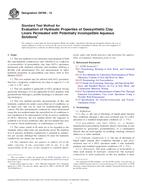
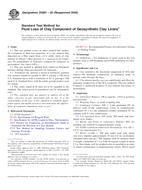 ASTM D5891-02(2009)..
ASTM D5891-02(2009)..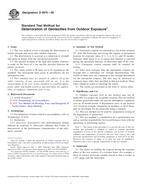 ASTM D5970-09
ASTM D5970-09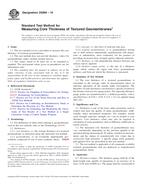 ASTM D5994-10
ASTM D5994-10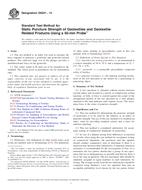 ASTM D6241-14
ASTM D6241-14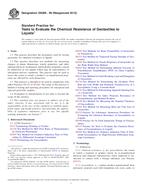 ASTM D6389-99(2012)..
ASTM D6389-99(2012)..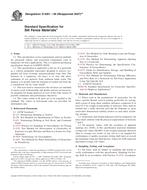 ASTM D6461-99(2007)e..
ASTM D6461-99(2007)e..
 Cookies
Cookies
